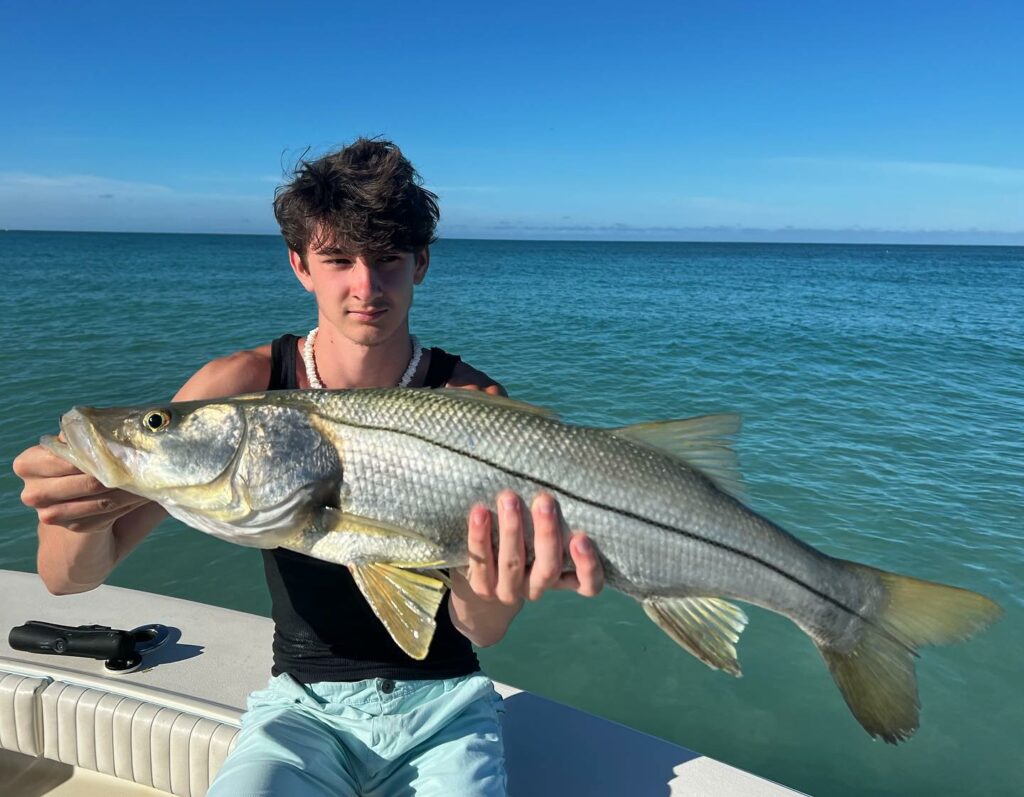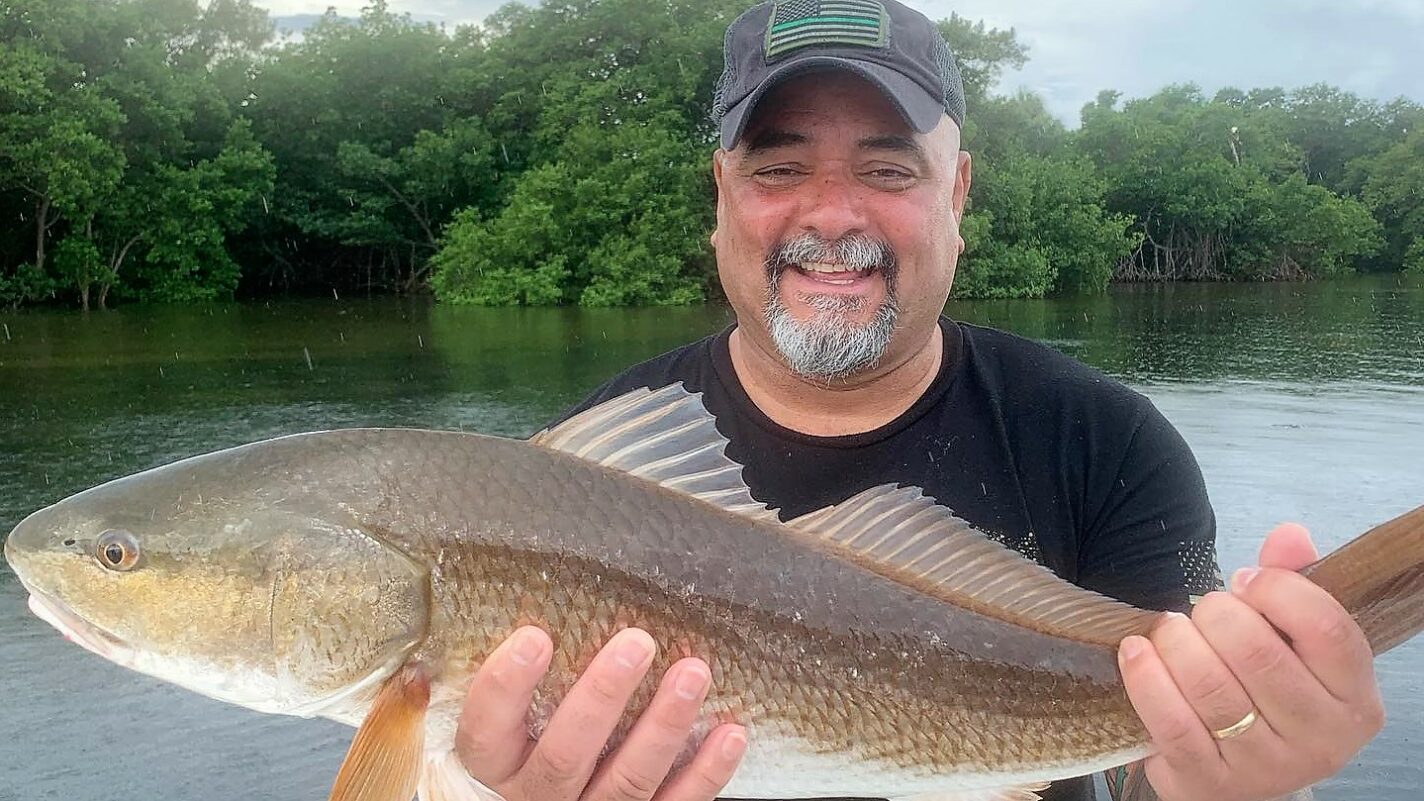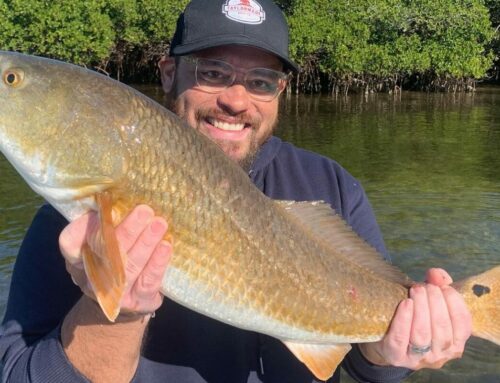Last Updated on March 6, 2024 by Writer
Around Anna Maria Island, the challenge of catching snook, redfish, and trout holds a special place in the hearts of fishermen. It’s not about the thrill or some grand adventure. It’s about the simple satisfaction of successfully targeting and catching these three esteemed species. Each fish presents its own unique set of challenges, making them a prized catch for anyone with a rod and reel in hand.
Snook, with their cunning nature and preference for structure, test a fisherman’s skill in accuracy and stealth. Redfish, known for their strength and the determination they show on the end of a line, challenge one’s patience and finesse. Trout, ever elusive, with a preference for specific conditions and habitats, demand a keen eye and an understanding of the water.
Catching these three isn’t just an activity; it’s a testament to a fisherman’s understanding of the local waters, the fish that inhabit them, and the techniques required to catch them. This guide isn’t about boasting or chasing the biggest catch. It’s a straightforward look at how to approach fishing for snook, redfish, and trout around Anna Maria Island – from understanding their habits to applying the right techniques. It’s about sharing knowledge, honing skills, and respecting the fish and the environment they thrive in. Let’s dive into the specifics, keeping it simple and focused, just like a good day on the water.
Knowing Your Fish
When you’re fishing around Anna Maria Island, knowing what you’re after makes all the difference. Snook, redfish, and trout – each has its own way of making a day on the water worth it. Let’s break down what you need to know about these fish to make your time as productive as possible.

Snook
Snook are smart. They like to hang around structures – docks, bridges, mangroves, you name it. These spots give them cover and a good vantage point to ambush prey. They’re particularly active during the early morning or late evening, especially in the warmer months. Come cooler weather, they move to deeper waters to keep warm. Snook are picky about water temperature; they prefer it just right, not too hot, not too cold. This preference dictates their movements throughout the year. In summer, you’ll find them in the backwaters and estuaries. When it gets cooler, they head off to warmer spots. Catching them requires understanding these habits and being able to read the water they might call home for the day.
Redfish
Redfish, or red drum, are all about the shallow flats, grassy marshes, and mangrove-lined shores. They’re bottom feeders, using their downturned mouths to root out crabs, shrimp, and fish from the mud and sand. You can often find them tailing in shallow waters, which is when they’re nose down, tail up, feeding on the bottom. This behavior makes them a fun challenge to spot and stalk. Redfish aren’t too picky about the temperature and can be caught year-round, but they have a soft spot for the cover provided by oyster bars and grass beds. Understanding the tide is crucial with redfish; they move with it, coming into the shallows to feed as the water rises and heading back to deeper waters as it falls.
Trout
Spotted seatrout, or just trout for short, prefer the clear, shallow waters over grass beds and sandy bottoms where their camouflage works best. They’re a bit more sensitive to temperature fluctuations than redfish and will move between deeper and shallower waters depending on the weather. Summer sees them in deeper, cooler waters, while in the cooler months, they’ll venture into the shallows to warm up and feed. Trout are ambush predators, waiting for the right moment to strike on small fish and crustaceans. Overcast days can be particularly good for trout fishing, as the reduced light lets them disguise their approach better. They’re also known for being more active during dawn and dusk, making those prime times to target them.
In all, while targeting these species around Anna Maria Island, a fisherman’s knowledge of their habits, preferred environments, and how they move with the seasons is key. It’s about understanding where they’re likely to be and when, based on the conditions at hand. No need for fancy words or over-the-top descriptions – it’s just about reading the water and knowing your fish.

Preparing for the Challenge
Timing and Tides
Understanding the ebb and flow of the tides and how they’re influenced by lunar phases is crucial for any fisherman looking to make the most out of a trip around Anna Maria Island. It’s not about some secret fishing magic; it’s about knowing when the fish are most likely to be active and feeding.
For starters, snook, redfish, and trout all have their preferences. Snook, for example, tend to be more active during the high tide, using the increased water level to explore areas usually inaccessible to them in search of food. Redfish, on the other hand, can often be found tailing in shallow flats on the outgoing tide, searching for crabs and small fish caught in the lowering water. Trout, preferring slightly deeper water, might be more consistent throughout the tide cycle but still show a marked increase in activity during the early morning and late evening hours, especially when the tide is moving.
The phase of the moon plays a part too. Full and new moons create stronger tides, and with them, stronger feeding patterns among these fish. Planning your trip during these lunar phases can significantly increase your chances of success. But remember, it’s not an exact science. It’s about putting yourself in the right place at the right time, as often as you can, and learning from each outing.
Reading the Environment
Paying attention to the world around you can tell you a lot about where to find fish. It’s not just about looking at the water and guessing; it’s about reading the signs. Bird activity, for example, can be a big giveaway. Birds diving into the water are often chasing the same baitfish that snook, redfish, and trout are after. Finding these frenzies can lead you to the fish.
Water clarity is another key factor. After a heavy rain, the water might get murky, making it harder for the fish to see your bait or lure. On days like these, targeting areas where clearer waters from springs or creeks flow into the bay can be a smart move.
Lastly, don’t ignore the importance of surface disturbances. The subtle wake of a redfish pushing through shallow water, or the distinctive swirl of a snook turning on a baitfish, can clue you in on their presence. It’s about being observant and using what you see to inform your approach.
By combining knowledge of timing and tides with a keen eye for reading the environment, you’ll set yourself up for a successful day on the water around Anna Maria Island. It’s not about fancy gear or secret spots; it’s about understanding the basics and applying them.

Fishing Strategies
Tactics for Snook – Catching snook around Anna Maria Island demands a blend of stealth and precision. These fish are smart and often hang around structure – under docks, along mangrove lines, and near bridge pilings. The key is to approach these areas quietly; any loud noise or sudden movement can spook them away. Once you’re in position, precision casting becomes your best tool. You want your bait or lure to land as close to the structure as possible without getting tangled. Snook are ambush predators, waiting for the right moment to strike prey that passes by.
Using live bait like pilchards or mullet can be very effective. If you’re working with lures, consider using ones that mimic the look and movement of these baitfish. The retrieve is crucial – it should be enticing enough to draw the snook out from its cover. Sometimes, a quick retrieve works best, but other times, a slower, more methodical approach is needed. Pay attention to how the fish are reacting and adjust accordingly.
Tactics for Redfish – Redfish require a different approach. They’re often found in shallow waters, tailing on flats as they search for food. Spotting a redfish tailing is one of the most exciting sights for a fisherman, signaling that they’re feeding and oblivious to your presence. When targeting these fish, bait presentation is key. You want your bait or lure to land softly, mimicking a natural food source dropping into the water.
For live bait, shrimp and crabs are top choices, appealing to the redfish’s natural diet. If you prefer artificial lures, look for those that can be worked slowly along the bottom, like soft plastics or spoons. The movement should mimic a crab or injured baitfish – something irresistible to a redfish. It’s all about patience and making your offering as natural as possible.
Tactics for Trout – Trout fishing around Anna Maria Island revolves around understanding their preference for depth and water temperature. These fish are often found over grass flats and around drop-offs where deeper water meets shallow flats. The key to targeting trout is selecting the right lure and presenting it at the correct depth.
Soft plastic jigs and topwater lures can be very effective, especially in the cooler parts of the day when trout are more likely to feed at the surface. During the midday sun, they tend to retreat to deeper, cooler waters, making sinking lures or weighted live bait a better choice. Regardless of your selection, the retrieval method should mimic the erratic movement of a wounded baitfish – an easy target for a hungry trout.
For all these species, remember, it’s not about casting as far as you can but about placing your bait where the fish are most likely to find it. Success in fishing these waters comes down to understanding the habits and preferences of your target and adapting your strategies to match.

Conservation and Ethics
Sustainable fishing practices are not just good manners; they’re essential for preserving our fish populations for future generations. Practicing catch and release, when done properly, ensures that snook, redfish, and trout can continue to thrive in the waters around Anna Maria Island. It’s crucial to handle fish with care, minimizing the time they spend out of water and using wet hands to avoid removing their protective slime coat.
Adhering to local fishing regulations, including size and bag limits, is another pillar of responsible fishing. These rules aren’t arbitrary; they’re designed to maintain healthy fish stocks and ensure that everyone has the opportunity to enjoy fishing, both now and in the future. By respecting these guidelines, we contribute to the sustainability of our local fishery and the overall health of our marine ecosystem.
Hit the Waters of AMI
This guide has walked you through the basics of targeting snook, redfish, and trout around Anna Maria Island, focusing on understanding fish behavior, optimizing timing and tactics, and emphasizing the importance of conservation and ethical fishing practices. The joy of fishing comes from the experience itself – the calm, the challenge, and the connection with nature. It’s about respect: for the sport, for the fish, and for the environment we all share.
For those looking to dive deeper into these waters, consider booking a trip with Captain Nate. With years of experience fishing around Anna Maria Island, Captain Nate offers invaluable insights and guidance, ensuring your fishing adventure is both successful and sustainable.




